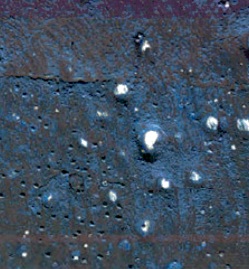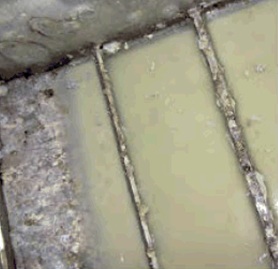Check the structural integrity of the hull for cracks, make sure your gear is securely loaded and stored low, never take more people on board as stated on the capacity label or Australian Builders Plate (APB) and make sure your engine or engines are serviced and maintained.
This section shows boat owners various tips in respect to checking and maintaining their boat and gear. It also shows how to retrofit buoyancy to trailer boats. MAST considers that the correct buoyancy in boats gives people a far better chance of survival should a swamping or capsize occur.
How to Determine your Boat’s Condition
Aluminium hulls
- Look for electrolysis and fractured welds. Electrolysis will cause the aluminium to corrode and is caused by dissimilar metals and debris being in contact.
- Keep a regular check on the hull. It is especially important to maintain a clean bilge as corrosion will lead to holes in the aluminium. “Hard points” caused by seat, frame or support connections to side and bottom plating will often cause the plate to fatigue and crack.
Fibreglass (GRP) Hulls
Two problems are common to older fibreglass boats. These are delamination which can lead to rotting of the timber core material and fractures in the glass laminate.
Transom cores should be looked at especially if the motor has been changed or removed sometime during the boat’s life. You should remove the engine mounting bolts and inspect the timber inside the fibreglass. Water can enter through these holes and become trapped inside causing the timber to rot and thus reducing the structural integrity of the hull. This can also happen with the bungs so it is important to also remove bilge drain plugs and inspect. Delamination and rotting can also occur in the frames of the boat, so where possible remove the flooring and check.
Fibreglass stress fractures can also occur in areas of stress, at joints and where point loads exist.
The attached checklist gives boat owners the opportunity to look for the most common issues that affects a boat’s structural integrity.
Osmosis
The term “osmosis” was coined in the early 70s to describe the blistering found on many GRP boat hulls and is now in common usage.
The osmotic process probably does occur within the blisters but is not the only process involved and is not the full story.
The attached article, written by Michael Hunn, Naval Architect, gives a detailed explanation of osmosis and how to treat it.

Hull with osmosis

Protective coating destroyed by prolonged immersion
Guide to Preventative Maintenance
The attached guide gives some preventative maintenance tips to owners of boats of all sizes.